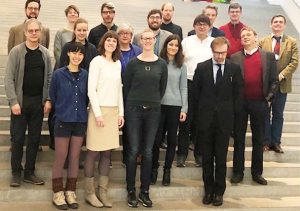Visual media and communication is part of our everyday life. Thus experts from a. o. Belgium, Hungary, Austria, Ireland, Malta, United States and Germany came together to discuss and explore chances to apply the concept of ‚visual literacy‘ to art museums. For further elaboration ENViL cooperated with the Catholic University of Eichstaett-Ingolstadt, the Bavarian Museum Academy, the Catholic University Leuven and the Toledo Museum of Art. The three-day conference focused on exhibition concepts and their communication in educational programs.
About 50 years after John Debes established the concept of ‚Visual Literacy’, international experts met in Munich in order to further proceed on the idea. Considering that art museums have numerous images on display, they seem to be ideal learning environments for acquiring visual literacy skills. Nowadays, still most art museums seem to use this potential more intuitively than with a clear reference to a convincing theoretical concept or model.
During the working conference, the participants mapped different approaches to visual literacy in art museums in order to establish a common basis to continue. Similarities and differences among relevant concepts were brought into dialogue, different good practices were traced, new projects and collaborations between curators, educators and researchers were exchanged. A tour through the current exhibitions of the Pinakotheken enhanced the debate about different and diverse accesses.
At the end of conference, organizers and participants came to an understanding on the next steps for future collaboration. The conceptualization and definition of ‚Visual Literacy’ for the purpose of ensuring a wide-spread (international) implementation of the concept in museums will be of capital importance. To create a ‘lingua franca’ of ‘Visual Literacy’ for museums, the organizers decided to work together on joint research and publication projects.
